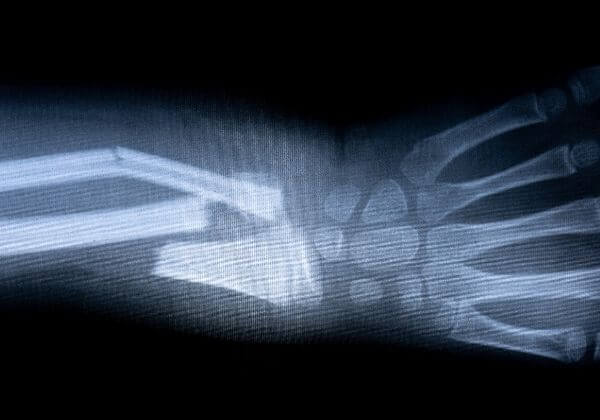Paget’s disease of bone disrupts the healthy recycling of bone in your body. In a healthy individual, old bones will be broken down as new bone tissue is formed.
With Paget’s disease of bone, the body generates new bone tissue before the old bone can be broken down. The result is softer and weaker bones, which are prone to deformities and fractures.
What Causes Paget’s Disease of Bone?
The exact cause of Paget’s disease of bone is unknown. Researchers believe that both genetic and environmental factors contribute to the development of the disease.
Studies have found that several genes are linked to the disease, and scientists have discovered that viral infections in bone cells are also linked to this.
There are factors that can increase your risk of Paget’s disease of bone, such as:
♦ Being over the age of 40
♦ Being male
♦ Having a family history of the condition
Paget's Disease of Bone Symptoms
Most of the time, there are no symptoms with Paget’s disease of bone. If any symptoms are noted, they usually consist of bone pain, specifically in the pelvis, spine, and legs.
The specific symptoms you experience will depend on which part of the body is affected.
♦ Pelvis: hip
♦ Skull: hearing loss and headaches
♦ Leg: bowlegged stance and osteoarthritis in the knees and hip
♦ Spine: Nerve roots can be impacted, causing tingling and numbness in the legs.
Paget's Disease of Bone Diagnosis
Your doctor identifies Paget’s disease using x-rays and blood tests. Bone scans are also used to further analyze the condition.
Scans will reveal bone abnormalities and decreased bone deposition. An alkaline phosphatase blood test can identify the condition, as people with Paget’s disease have excess levels of this enzyme in their blood. Other diseases can also cause elevated phosphatase levels, so this cannot be the only diagnostic tool.
Treatment for Paget's Disease of Bone
There is no cure for Paget’s disease, but treatment can reduce the severity of symptoms and improve quality of life.
The tests performed by your doctor will determine if you need treatment, as not everyone does. Treatment typically involves bisphosphonates, which are medications that break down older or damaged bone.
It is important to maintain adequate levels of vitamin D and calcium in the body before starting bisphosphonate treatment.
Paget's Disease of Bone Diet
Because vitamin D and calcium levels are important for medications to work, a diet high in both of these minerals can help reduce symptoms of Paget’s disease. You can opt for supplements or add these foods to your diet.
Vitamin D-rich foods:
♦ Fortified grains and cereals
♦ Beef liver
♦ Egg yolks
♦ Cheese
♦ Fatty fish like salmon
Calcium-rich foods:
♦ Yogurt
♦ Almonds
♦ Tofu
♦ Figs
♦ Spinach
♦ Kale
Natural Treatments for Paget's Disease of Bone
Supportive therapy is the best natural option you can try for Paget’s disease of bone. The therapy and exercises are designed to support movement and to reduce pain, so daily tasks are easier.
You can also use devices to help reduce the weight placed on affected bones, such as:
♦ A walking stick or frame
♦ Braces to support your spine
♦ Orthotic inserts for your shoes to support your feet
Paget's Disease of Bone Surgery
When Paget’s disease causes fractures or serious bone deformities, surgical treatment may be necessary. Fractures from this disease are common in the thigh and shin bones, and surgery involves the insertion of an intramedullary rod into the center of the bone.
♦ An osteotomy may also be done when legs become misshapen in later stages of the disease. A small wedge of bone will be removed to correct a bone that is badly aligned. With either surgical procedure, the outlook is good.
♦ Hip or knee replacement surgery may also be required to replace a damaged joint with an artificial one.
♦ Correctional procedures are also done to cut and straighten deformed bones, as well as realign them after fractures, so they can heal properly.
Paget's Disease of Bone Statistics
♦ Close to 1 million people in the United States have Paget’s disease of bone.
♦ The disease occurs in three men to every two women.
♦ 1 percent of people with Paget’s disease of bone get bone cancer.
♦ More than one family member has the disease in 30 percent of cases.
♦ Juvenile Paget’s disease of bone has been diagnosed in 50 children worldwide.
Complications of Paget’s Disease of Bone
The progression of this disease is slow, but it can be managed effectively. If not managed or treated, over time, more serious complications can arise.
♦ Fractures and deformities occur as bones gradually weaken.
♦ Osteoporosis develops as a result of the excess pressure placed on weakened bones.
♦ Heart failure, as the disease causes your heart to pump harder to affected areas
♦ Neurological problems can occur when nerves that pass through the spine and skull are damaged.
Paget's Disease of Bone in Children
Juvenile Paget disease of bone affects the growth of bones, causing abnormally large or misshapen bones in children. It can also cause weakened bones that are more prone to fractures.
As the bones continue to grow, they get weaker and more prone to painful deformity, so early diagnosis and treatment are important. The condition is extremely rare, but it can be managed when treatment begins early.
What Is the Long-Term Outlook?
In most cases, the long-term outlook for individuals with Paget’s disease of bone is positive. This is especially true when treatment is sought before any serious bone changes or breaks occur.
There is no cure, but treatment can effectively manage and reduce symptoms, allowing you to lead a normal and healthy life. You can also work to prevent this disease with regular exercise, to maintain bone health and prevent excessive weight gain.









